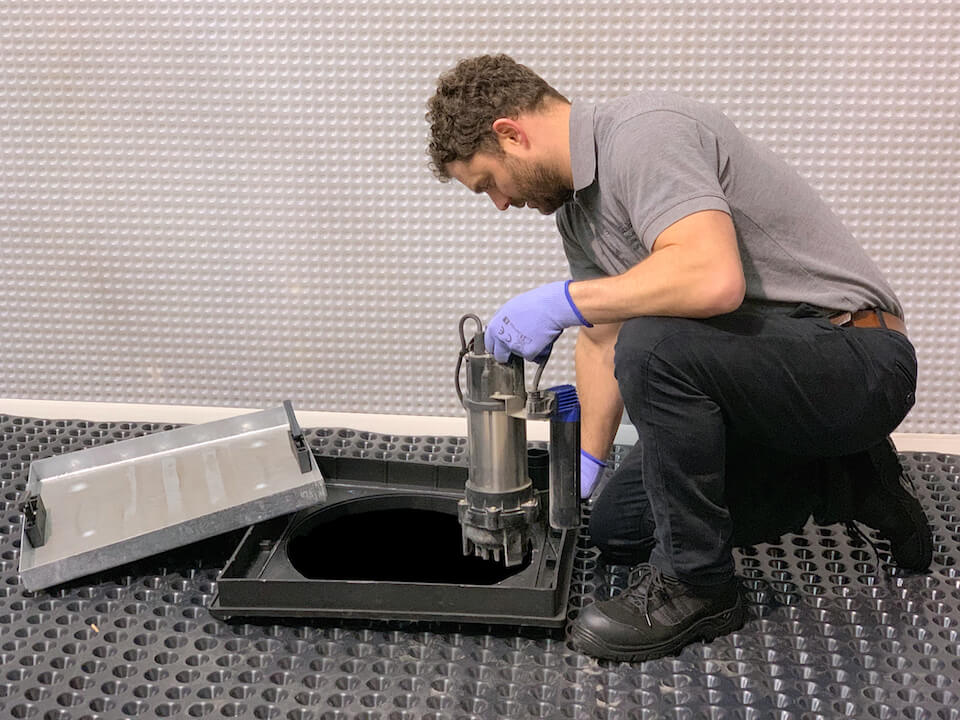We've unearthed this post relating to How To Effectively Clean A Sump Pump directly below on the net and think it made sense to talk about it with you on this site.

Sump pumps are vital parts in lots of homes, particularly in areas vulnerable to flooding or excessive dampness. They aid stop water damage by efficiently eliminating excess water from basements or crawl spaces. Nonetheless, like any other device, sump pumps call for regular maintenance to guarantee they work effectively when needed one of the most. Cleansing your sump pump is an important part of its maintenance, and understanding how to do it properly can conserve you from expensive fixings and prospective catastrophes.
Intro
Keeping a clean sump pump is essential for its appropriate performance and long life. Overlooking this vital task can lead to clogs, breakdowns, and inevitably, water damage to your home. As a result, learning just how to clean a sump pump is critical for property owners who rely upon these devices to maintain their basements dry and safeguarded.
Comprehending the Sump Pump
Prior to diving into the cleansing process, it's necessary to have a standard understanding of just how a sump pump functions. Usually installed in a pit or container listed below the cellar flooring, a sump pump contains numerous crucial components, including a pump, a float switch, and a discharge pipe. When water accumulates in the pit, the float button activates the pump, which after that pumps the water out with the discharge pipeline, far from the building's structure.
Signs of a Dirty Sump Pump
Understanding when your sump pump needs cleaning is crucial for preventing potential malfunctions. Some usual indicators that show a filthy sump pump consist of weird noises during operation, reduced water flow, and visible particles in the pit. If you discover any of these symptoms, it's vital to clean your sump pump promptly to avoid any type of more concerns.
Getting ready for Cleaning
Prior to you start cleaning your sump pump, it's vital to take some security precautions. Begin by shutting off the power to the pump to avoid any electric crashes. Additionally, wear proper safety equipment, such as handwear covers and safety glasses, to secure on your own from dirt, debris, and prospective microorganisms.
Step-by-step Overview to Cleansing a Sump Pump
Shutting Off the Power
Begin by separating the power supply to the sump pump to prevent any kind of crashes while cleaning.
Removing Particles and Dust
Make use of a pail or a scoop to remove any noticeable debris, dust, or debris from the sump pit. Dispose of the debris appropriately to prevent it from blocking the pump or the discharge pipeline.
Cleansing the Pump and Drift Switch Over
When the pit is clear of debris, meticulously get rid of the pump from the pit. Check the pump and the float button for any type of indicators of damage or wear. Make use of a soft brush or fabric to cleanse the surface areas and remove any kind of collected grime.
Purging the System
After cleansing the pump and float switch, flush the sump pit with clean water to eliminate any kind of staying dirt or debris. This will certainly help make certain that the pump operates smoothly and successfully.
Looking For Appropriate Performance
Prior to reinstalling the pump, execute a quick examination to ensure that the float button activates the pump correctly. Pour some water into the sump pit and observe the pump's procedure. If everything is working appropriately, you can reassemble the pump and reconnect the power supply.
Maintenance Tips to Maintain Your Sump Pump Clean
In addition to regular cleaning, there are several upkeep pointers you can comply with to keep your sump pump in ideal condition:
Verdict
Cleansing your sump pump is a crucial facet of its upkeep and makes certain that it operates effectively when you require it one of the most. By following the steps described in this guide and integrating routine upkeep into your routine, you can expand the life-span of your sump pump and protect your home from water damage.
6 STEPS ON HOW TO CLEAN A SUMP PUMP PROPERLY
UNDERSTANDING SUMP PUMPS
Your sump pump plays a crucial role in protecting your home by managing and removing excess water. It primarily functions as a “shield”, guarding your basement against the damaging effects of water accumulation. The pump is housed in a sump pit in the lowest part of your basement, and its job is to pump out any water that collects there.
During heavy rainfalls or when snow melts rapidly, water can infiltrate your basement, posing potential risks like flooding, structural damage, and harmful mold growth. Here, the sump pump springs into action, pumping out the intruding water and directing it away from your home.
SAFETY FIRST
Before cleaning, remember to prioritize safety. Disconnect the sump pump from the power source to prevent any accidental electric shocks. Also, wear sturdy gloves to protect your hands from any sharp or dirty components within the pump.
REMOVE THE SUMP PUMP
After ensuring your safety, the next step is to remove the sump pump from its pit. Doing this might require careful maneuvering as you don’t want to damage any pump components. Once removed, clean the sump pit to remove any accumulated debris or sludge.
INSPECT THE PUMP
Inspect the pump for any visible signs of wear or damage. Check the power cord, float switch, and impeller housing. If any components look worn out or damaged, consider replacing them to ensure optimal performance.
CLEAN THE PUMP
Thoroughly clean the pump with warm, soapy water. Make sure to rid it of any dirt, gravel, or other debris that might impede its performance. You can use a toothbrush to clean the small, hard-to-reach parts of the pump.
REINSTALL THE SUMP PUMP
Reinstall the pump into the sump pit Make sure it’s positioned correctly to remove the water effectively Once it’s back in place, reconnect it to the power source TEST THE PUMP
Finally, pour some water into the pit to ensure the pump works correctly. It should start automatically and begin pumping out the water; if it doesn’t, check the power source and the positioning of the pump.
Remember, while cleaning your sump pump is an essential part of home maintenance, hiring a professional plumber for a thorough inspection and cleaning at least once a year is also important. This will ensure that your pump is in optimal condition, ready to protect your home from potential water damage.
BEST PRACTICES FOR CLEANING SUMP PUMP DISCHARGE PIPES
Regular Inspection: Regularly inspect your discharge pipes, especially during heavy rainfall or snowmelt periods. Look for any signs of blockage or damage. Early detection of problems can prevent serious issues down the line. Periodic Cleaning: Over time, sediment and debris can accumulate in the discharge pipes, impeding the flow of water. Regular cleaning helps keep the pipes clear and functioning efficiently. You can use a high-pressure water jet to effectively clean the pipes. Insulation During Winter: In colder climates, discharge pipes can freeze, blocking the outflow of water. Protect your discharge pipes from freezing temperatures by insulating them with foam pipe insulation. This will ensure the sump pump can continue to discharge water even in freezing conditions. Proper Positioning: The discharge pipe should be positioned to direct water away from your home’s foundation. Improper positioning can lead to water seeping back into the basement. Ensure the pipe is long enough and angled correctly. Installation of a Check Valve: A check valve prevents water from flowing back into your sump pit after the pump has pushed it out. Installing a check valve helps maintain the efficiency of your sump pump and reduces the risk of flooding. Minimize Pipe Turns: Every curve or turn in the discharge pipe can decrease the efficiency of water flow. By minimizing turns and bends in your discharge pipe, you can increase the efficiency of your sump pump. https://www.fullspeedplumbing.com/how-to-clean-a-sump-pump-properly9999/

I recently found that review on Keep Your Sump Pump Clean, It'll Keep You Dry while browsing the search engines. Those who enjoyed reading our page plz do not forget to pass it around. I am grateful for your time. Revisit us soon.
Automated Marketing